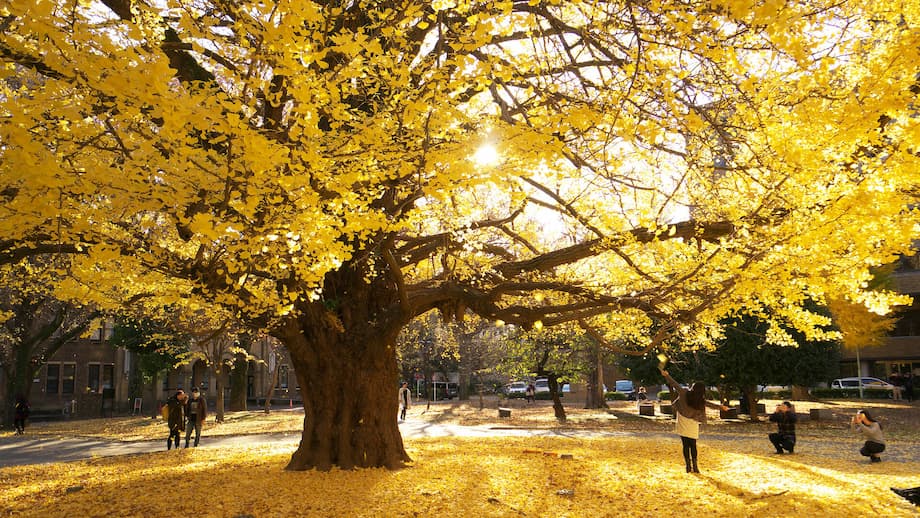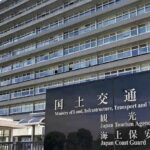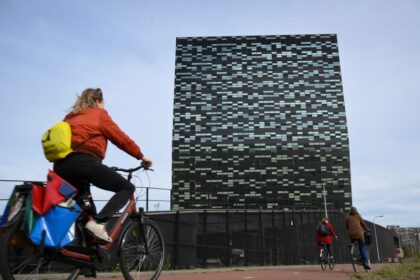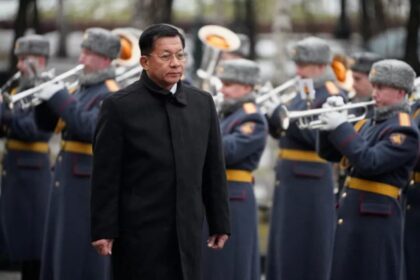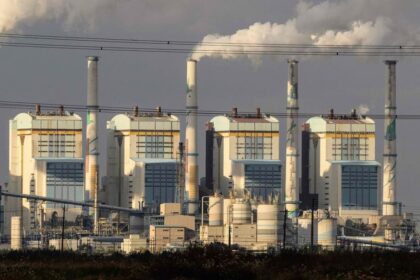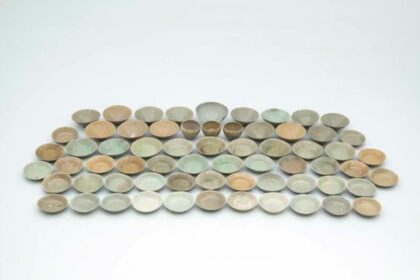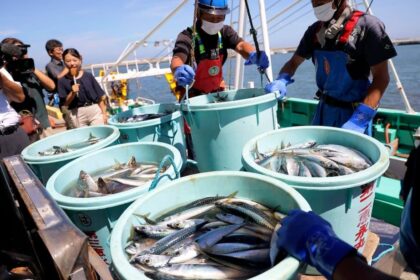Later peaks expected as warm autumn lingers across Japan
Japan’s famed autumn foliage season is set to run later than usual in many areas in 2025. The Japan Meteorological Corporation released the second edition of its national forecast on October 2. The outlook points to yellow ginkgo trees changing on a near normal schedule in many cities, while red maple peaks will slide slightly later, especially in northern and interior regions. The color front will still descend from Hokkaido to Kyushu, moving from high elevations to lowland neighborhoods. Travelers can expect the most reliable window for city parks and temple gardens from the final third of November into the first half of December.
Among the headline dates: Sapporo leads the season with yellow ginkgo around November 7 and red maples near November 9. Tokyo is slated for yellow around November 27 and red around December 1. Osaka should see yellow on November 24 and red around December 5. Kyoto is projected to peak later, with red maples around December 12. Kanazawa and Nagano look set for early December red in Kanazawa, and late November red in Nagano. In Kyushu, Fukuoka is guided to December 9 for red and Kagoshima to December 13. High mountain zones will color earlier than nearby city centers, sometimes by one to two weeks, thanks to cooler nights.
What the latest forecasts say
The latest outlook organizes the season into two sets of dates, one for yellow ginkgo and another for red maple. Ginkgo timing is close to the long term normal across much of Honshu and Shikoku. Maple peaks are expected to lag behind the usual calendar in many northern and inland areas. Japan Weather Association projections match this pattern, indicating around usual or later peaks in northern and eastern Japan and near usual timing in many parts of western Japan.
Yellow ginkgo: expected windows
Ginkgo leaves will paint boulevards and gardens in bright gold first. These dates mark the best viewing in major cities.
- Sapporo: November 7
- Aomori: November 7
- Kanazawa: November 12
- Nagano: November 17
- Tokyo: November 27
- Nagoya: November 19
- Osaka: November 24
- Kyoto: November 28
- Hiroshima: November 21
- Kochi: November 17
- Fukuoka: November 28
- Kagoshima: November 29
- Wakayama: November 27
Red momiji: peak dates by city
Red momiji generally arrive a little after ginkgo. Warmth into October means many cities will see the deepest scarlet tones closer to late November or early December this year.
- Sapporo: November 9
- Aomori: November 14
- Tokyo: December 1
- Kanazawa: December 1
- Nagano: November 24
- Nagoya: December 3
- Osaka: December 5
- Kyoto: December 12
- Hiroshima: November 28
- Kochi: December 10
- Fukuoka: December 9
- Kagoshima: December 13
- Wakayama: December 13
Forecasts are dynamic and will be refined as temperatures drop. The next comprehensive update from the forecasting team is scheduled for early November.
Why the timing is later this year
Leaf color depends on a simple set of triggers. Shorter days signal the end of the growing season. Cool nights help break chlorophyll and reveal the yellow and orange pigments in ginkgo and many other species. In maples, cool, sunny days and crisp nights promote the production of red pigments called anthocyanins. When October stays warm, the daily temperature swing is smaller and the biochemical changes slow down.
That backdrop explains the slower start in 2025. Summer heat lingered, and national temperature outlooks call for above average warmth through much of October. As nights cool in November, color change will quicken and peaks will line up with the late November to early December window across much of central and western Japan.
Japan Weather Association (JWA), which issues a national peak viewing forecast, describes the relationship as follows:
“The timing of peak autumn foliage depends on autumn temperatures: cooler weather accelerates color change, while warmer weather delays it.”
Other variables such as sunshine, early frosts, wind, and rainfall can nudge dates a few days either way. Strong winds can strip leaves quickly after peak. A wet and cloudy spell can mute colors, while sunny, dry weather with cool nights brings the most vivid reds.
Regional outlook, from Hokkaido to Kyushu
Hokkaido and the Tohoku north: In Hokkaido, Sapporo offers an early start, with ginkgo around November 7 and momiji near November 9. Higher terrain in Daisetsuzan and the Jozankei area colors earlier, often in October, so alpine hikes deliver the season’s first show. In Tohoku, Aomori’s ginkgo is guided to November 7 and red peaks near November 14. Streams and gorges such as Oirase and Lake Towada shine from early to mid November.
Kanto and Chubu: In Kanto, Tokyo’s parks and gardens peak in the last days of November for yellow and the start of December for red. Nearby Nikko runs earlier, with lakeside viewpoints around mid to late October at higher elevations and early November closer to town. In Chubu, Nagano’s highlands reach color in late October to early November, while city centers track to late November. Kanazawa’s ginkgo arrives around November 12 with red near December 1.
Kansai and the Chugoku/Shikoku west: Kansai heads for a concentrated finish. Osaka is forecast for yellow on November 24 and red around December 5. Kyoto centers on early to mid December for maples, with nighttime illuminations bringing temple precincts alive. Across the region, Kobe and Nara follow a similar cadence, and Wakayama’s red appears around December 13. In Chugoku and Shikoku, Hiroshima moves into peak around the last week of November, and Kochi’s maples crest around December 10.
Kyushu: Farther south, Kyushu offers late season color. Fukuoka is guided to yellow on November 28 and red on December 9. Kagoshima keeps the curtain open into mid December, with ginkgo around November 29 and red maples near December 13.
City snapshots and key dates
Use these city targets to anchor travel plans, then add mountain or riverside side trips for earlier or later color.
- Tokyo: Yellow Nov 27, Red Dec 1. Try Meiji Jingu Gaien for ginkgo and Rikugien Garden for evening scenes.
- Kyoto: Yellow Nov 28, Red Dec 12. Aim for Kiyomizu-dera, Arashiyama and quieter corners like Yoshimine-dera.
- Osaka: Yellow Nov 24, Red Dec 5. Osaka Castle Park and Minoo Park offer easy access.
- Sapporo: Yellow Nov 7, Red Nov 9. Hokkaido University Ginkgo Avenue and Jozankei Onsen are seasonal highlights.
- Kanazawa: Yellow Nov 12, Red Dec 1. Kenrokuen Garden and nearby streets glow in late autumn.
- Nagano: Yellow Nov 17, Red Nov 24. Consider Zenkoji precincts and Kamikochi or Togakushi for earlier hikes.
- Nagoya: Yellow Nov 19, Red Dec 3. Korankei Gorge outside the city is one of the region’s most vivid maple valleys.
- Hiroshima: Yellow Nov 21, Red Nov 28. Miyajima’s Momijidani Park is usually at its best in late November.
- Fukuoka: Yellow Nov 28, Red Dec 9. Maizuru Park and Yusentei Park are top choices.
- Kagoshima: Yellow Nov 29, Red Dec 13. Senganen Garden frames foliage with views of Sakurajima.
These dates describe the expected week when each city will look its best. Mountain parks and river valleys in the same prefecture can shift earlier or later by several days.
How to plan a foliage trip in 2025
Late November to early December is the most dependable period for Tokyo, Kyoto, Osaka, Kanazawa, and Hiroshima. If you arrive earlier, aim for Hokkaido, Aomori, or high elevation areas in the Alps and Nikko. If you arrive later, focus on Kyoto, Osaka, Wakayama, Kochi, Fukuoka, and Kagoshima.
- Build two to three day windows per city to ride out weather changes.
- Reserve Kyoto hotels and temple event tickets well ahead.
- Visit big sights at opening time and on weekdays to avoid crowds.
- Dress in layers and carry a light rain shell, nights can be brisk.
- Check evening illuminations at temples and gardens, many run for limited periods.
- Keep a plan for foul weather, art museums and covered shopping streets make easy pivots.
- If you want both ginkgo and maples at once, aim for the last few days of November in Tokyo or Kyoto.
- Use rail passes or IC cards for flexibility, trains reach most foliage districts quickly.
- Monitor updated color reports a few days before each outing.
Travelers who want to chase color can track north to south or high to low elevation. Start in Hokkaido or the Tohoku mountains, then work toward the Kansai heartland and finally Kyushu.
Top viewing ideas and lesser known spots
Famous sites deserve their reputations, yet quiet places can be just as memorable and easier to enjoy. These ideas mix iconic settings with crowd friendly alternatives.
- Tokyo Koishikawa Botanical Garden, a spacious historic garden with maple tunnels and golden ginkgo.
- Tokyo Kiyosumi Garden, a stroll garden around a pond that reflects red and yellow hues.
- Tokyo Koishikawa Korakuen, classic scenery with stone bridges and scarlet maples.
- Tokyo Zenpukujigawa Green Space and Wadabori Park, river side paths lined with ginkgo and maples.
- Chiba Ichikawa Ekoin Temple, a small temple garden with vivid maples.
- Hokkaido University Ginkgo Avenue in Sapporo, a straight run of golden trees that peaks in early November.
- Miyajima Momijidani Park near Hiroshima, a valley of maples close to Itsukushima Shrine.
- Lake Kawaguchi Maple Corridor near Mt. Fuji, postcard views with early to late November color depending on elevation.
How forecasts are made
Forecast providers use decades of observed coloring dates, temperature patterns, and elevation data to estimate the best week to visit each city and major viewing site. The Japan Meteorological Corporation compiles dates for both yellow ginkgo and red maple across hundreds of spots. Japan Weather Association analyzes correlations between temperature and past maple coloring, then releases national maps and peak windows, with updates in October and November.
JWA defines peak for maples as the stage when most leaves on maple trees have turned red. Higher elevations color earlier than lowland neighborhoods, so even within one city a shrine on a hillside can peak days ahead of a riverside park. You can track official updates and maps on the Japan Weather Association website at this forecast page. Updates begin in late September and continue through November.
What to Know
- Ginkgo peaks trend near usual timing in many cities, while red maple peaks skew later in many regions.
- The most dependable window for central and western Japan is mid November to early December.
- Tokyo targets November 27 for ginkgo and December 1 for red maples.
- Kyoto is guided to December 12 for red maples, with popular night illuminations in season.
- Osaka targets November 24 for ginkgo and December 5 for red maples.
- Sapporo starts early, with November 7 for ginkgo and November 9 for red maples.
- Fukuoka and Kagoshima offer the last color, from late November into mid December.
- Mountains and northern areas turn earlier than nearby city centers.
- Forecasts update in early November, check again before travel.
- Wind, rain, and cloud cover can shorten or mute peak, so build buffer days into your plan.


